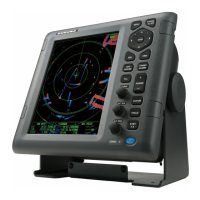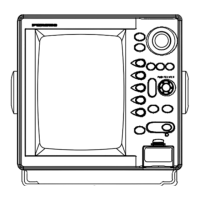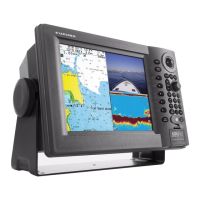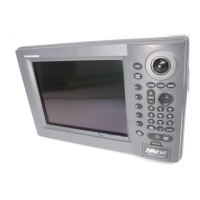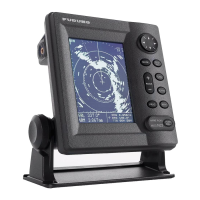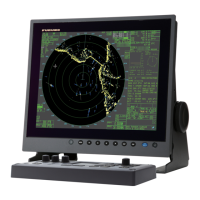7. TT OPERATION
targets. Once a target is acquired, a target is automatically tracked within 0.1 to 16 nm.
box). (3) Access the [Target] and [TT] menus for TT operations.
(or remove) target data.
Do not depend on one navigation
device
for the navigation of the ship. The
navigator must check all aids available
to confirm position. Electronic aids are
not a replacement for basic navigation
principles and common sense.
· The TT automatically tracks an
automatically or manually acquired
radar target and calculates its course
and speed, indicating them by a vector.
Since the data from the auto plotter
depend on the selected radar targets,
the radar must be optimally tuned for
use with the auto plotter, to ensure
required targets will not be lost or
unnecessary targets like sea returns
and noise will not be acquired
and tracked.
· A target is not always a landmass, reef,
ship, but can be returns from the sea
surface and clutter. As the level of clutter
changes with the environment, the
operator must correctly adjust the
SEA, RAIN and GAIN controls so
that the target echoes do not disappear
from the radar screen.
The plotting accuracy and response of
this TT meets IMO standards.
The tracking accuracy is affected by the
following:
· The tracking accuracy is affected by
course change. One to two minutes is
required to restore vectors to full
accuracy after a sudden course change.
(The actual amount depends on
gyrocompass specifications.)
· The amount of tracking delay is inversely
proportional to the relative speed of the
target. Delay is on the order of 15-30
seconds for high relative speed; 30-60
seconds for low relative speed.
The display accuracy is affected by the
following:
· Echo intensity
· Pulse width of radar transmission
· Radar bearing error
· Gyrocompass error
· Course change (your ship or target)
CAUTIONCAUTION
CAUTIONCAUTION
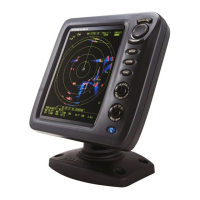
